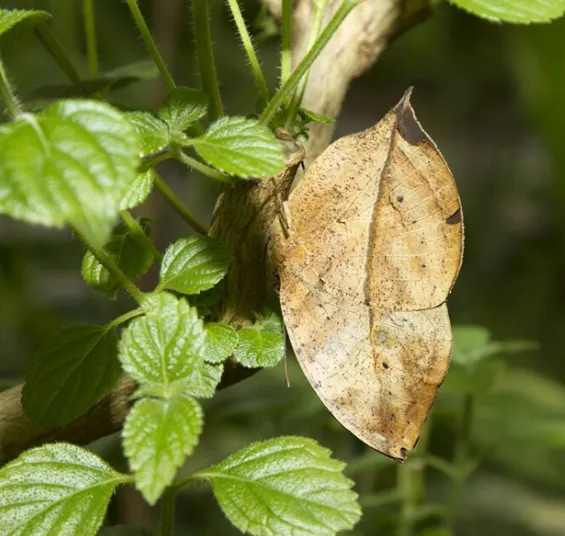Peach moth, scientifically known as Anarsia lineatella, is a pest species. This species causes damage to peach trees during the fruit ripening period. The pest gnaws on the flower leaves and pierces them, feeding on the flower ovaries, leading to the drying and shedding of the fruits.
Peach moth is particularly known for the damage it causes to peach trees. Due to the damage it inflicts on the fruits, it negatively affects the national economy. Therefore, combating this species is of great importance. Various methods are used in the fight against this pest species, including cultural, biological, biotechnical, and chemical methods.
Oriental Fruit Moth
The question “What is the peach moth?” is frequently asked. This moth is a species known for the damage it causes to peach trees and plants. This pest species causes significant destruction in many countries, including Turkey.
This pest species, which must be fought effectively, inflicts its most significant damage on peach trees and plants, leading to substantial economic losses. This pest species poses a threat to farmers who produce peaches, and therefore, effective control is necessary.
The life cycle of this species involves producing 4-6 generations per year, and it measures about 10 mm in length with brown-gray coloring.
The damage occurs when the larvae target the soft tissues of the plants. Female moths lay their eggs on young shoots or the surface of the fruit. After hatching, the larvae enter the shoots and damage the plant tissues.
The damages caused by this moth species include:
- Damage to the shoots: Larvae enter the young shoots, hindering the growth of the plant. This can cause significant damage to young saplings.
- Damage to the fruit: Larvae create galleries inside ripening fruits, causing premature fruit drop or decay. Damaged fruits lead to significant export losses, which poses a serious problem for the national economy.
- Secondary damage: This species can also cause secondary issues, such as fungal infections or rot.
This moth species also damages products other than peaches, such as apricots, plums, almonds, and nectarines.
For apricots, the damage caused by the peach moth can result in substantial losses for farmers. Effective measures must be taken to prevent economic losses and protect the farmers.

Peach Twig Borer Control
The peach moth, also known as the peach twig borer, is a pest species that causes significant damage to fruit trees and leads to production losses. Effective control methods have been developed, and they include the following:
Cultural Control
One of the most important methods in controlling this pest species is cultural control. By taking cultural precautions, more effective control can be achieved, and the population growth or control can be managed. Some cultural precautions include:
- Pruning: Pruning the infected shoots can lead to a significant reduction in the moth population.
- Orchard cleanliness: Fallen fruits should be cleaned up and destroyed after harvest, as larvae can continue to develop on undestroyed fruits.

Biological Control
In biological control, the natural enemies of the moth species are used. Parasitic wasps of the Trichogramma species can attack the moth eggs, preventing their development.
Chemical Control
Insecticides are used in this control method; however, it is challenging to fight the larvae that have entered the fruits.
Biotechnical Methods
In biotechnical methods, pheromone traps are frequently used. These traps are very effective in controlling and reducing the population.
What Are Pheromone Traps and Their Features?
Pheromone traps are an effective method frequently used in pest control. In this trap type, the pheromones released by female moths are mimicked. Using chemicals that imitate these pheromones, male moths are lured into the trap, where they stick to adhesive surfaces and are eliminated.
The advantages of pheromone traps include:
- This type of trap is species-specific, meaning it targets only one species, preventing harm to beneficial organisms.
- It reduces the use of chemicals, thereby protecting the environment and human health.
- It is important for monitoring and reducing the population.
- The cost of this type of trap is very low, and it is easy to set up.
Due to its ease of use and affordability, pheromone traps are a frequently preferred method in pest control. Other traps used include delta traps, mass trapping traps, and sticky traps.
For more information about the peach moth, its damages, and control methods, you can contact Kapar Organik.
